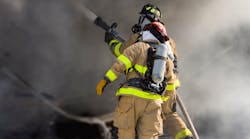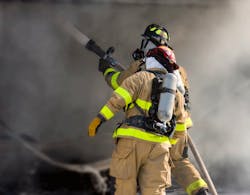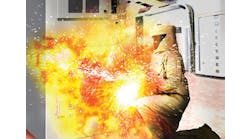As smarter, more advanced technologies emerge in the fire and life safety industry, staying up to date on codes and regulations has become even more critical for facility safety. In addition to ensuring legacy systems remain compliant, electrical professionals must educate themselves on standards for new applications they plan to install or have already implemented. A prime example of the importance of keeping up with changing codes are the provisions made by the National Fire Protection Association (NFPA) in the 2019 edition of NFPA 72, National Fire Alarm and Signaling Code, to provide quality standards and regulations for the application, installation, performance, and maintenance of advancing fire alarm and emergency communications systems.
With nearly 200 changes in the 2019 edition, NFPA 72 serves as a vital resource for facility managers, owners, architects, engineers, and contractors. It not only supplies key material to understand proper compliance and maintenance, but also shares insights into industry trends, such as nuisance alarms, maintenance needs, and elevator usage. Being aware of fire and life safety trends, technology advancements, and code updates is the first step in implementing a safer facility.
Reducing Nuisance Alarms
Nuisance alarms are known for wasting valuable emergency response resources. In fact, NFPA found that U.S. fire departments responded to nearly 2.9 million false alarms in 2018. This not only resulted in fines and penalties for facility owners, but also reduced the availability of emergency responders to act on real threats or emergencies.
NFPA 72 has recognized the issue of nuisance alarms as a serious, life-threatening problem because it often leads to disconnected smoke alarms. But even if the alert isn’t sending an emergency notification, it’s still providing insight into the health of facility fire systems — often meaning maintenance is required. As a result, the time has come for the industry to provide smarter smoke detection that’s Internet of Things (IoT)-enabled.
NFPA 72 continues to evolve as alarm panels and fire and smoke detection technologies become more commonly connected with the IoT. When systems are improperly connected to IoT devices, such as the cloud, nuisance alarms can result as well as cybersecurity issues.
The 2019 edition of NFPA 72 shares guidelines around Class N pathways — a circuit designation that permits the use of non-life safety networks and Ethernet when integrating with life safety systems. Class N pathways provide a flexible approach for the design and installation of fire alarm systems, and NFPA outlines how to safely implement this Ethernet ability.
It’s important not to lessen life safety just for the sake of putting it on the Internet, so proper implementation is crucial to ensure that access to system data is secure. Regularly testing and maintaining fire and life safety systems can help ensure there aren’t any faults or downtime required.
Ensuring Proper Detection and Maintenance
NFPA 72 is a vital resource for ensuring the proper installation, testing and maintenance of fire alarms and detection technologies. Like vehicles, which require oil changes or yearly inspections, fire and life safety solutions require regular maintenance — or else they’re bound to break down. But maintenance can take on a simpler role when devices are IoT-enabled.
Advanced fire and smoke technologies are more intuitive than traditional alarm systems and can send maintenance alerts or conduct automated testing to help predict when repairs are required to help get ahead of the issue. Regular testing and maintenance can greatly decrease system downtime and lead to a more proactive and preventive approach to facility safety.
Evolving Provisions for Enhanced Emergency Response
For years, it has been noted to not use an elevator in the event of a fire; but what if the fire isn’t close enough to affect the elevators? Does it still make sense not to use those unaffected elevators?
The latest edition of NFPA 72 brings attention to smarter facilities that can enable Occupant Evacuation Elevators (OEE). However, there are key changes relating to the use of OEE, such as the interface between the fire alarm and elevator controls. For example, while the controls are connected and can “communicate” building insights with one another, they must also include a connection to emergency or mass notification systems to comply with sign-age requirements. This ensures visual and audio signals are prevalent during emergency evacuations that notify occupants to whether an elevator is safe to use. This helps provide faster and safer evacuations while improving emergency response times, as it alleviates stairwell congestion and offers an alternative route for handicap occupants.
The industry is constantly evolving, so keeping up with advancing fire and life safety technologies and requirements can be an enormous undertaking. Extracting the expertise of contractors can be helpful when looking to make the update from legacy systems to newer, more connected smart solutions or even connecting the two.
Compliance is the Key to Safer Facilities
From reducing unwanted alarms and ensuring proper system maintenance to improving emergency response times, the 2019 edition of NFPA 72 serves as a benchmark to meet the advanced safety standards for society’s evolving fire detection, signaling, and emergency communications demands. It’s critical to ensure facilities are in compliance with the latest codes, as they are issued to provide the utmost safety for facilities and occupants. Failing to comply with the latest standards and regulations often results in hazardous environments and ramifications such as fines, damaged property, or worse (i.e., occupant injuries).
Reiswig is vice president of industry relations at Johnson Controls in Milwaukee. He can be reached at [email protected].





